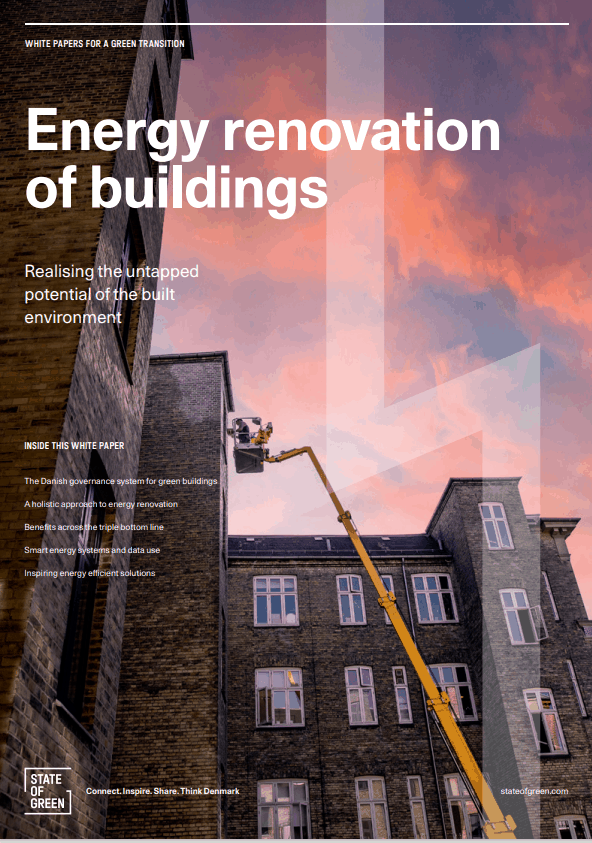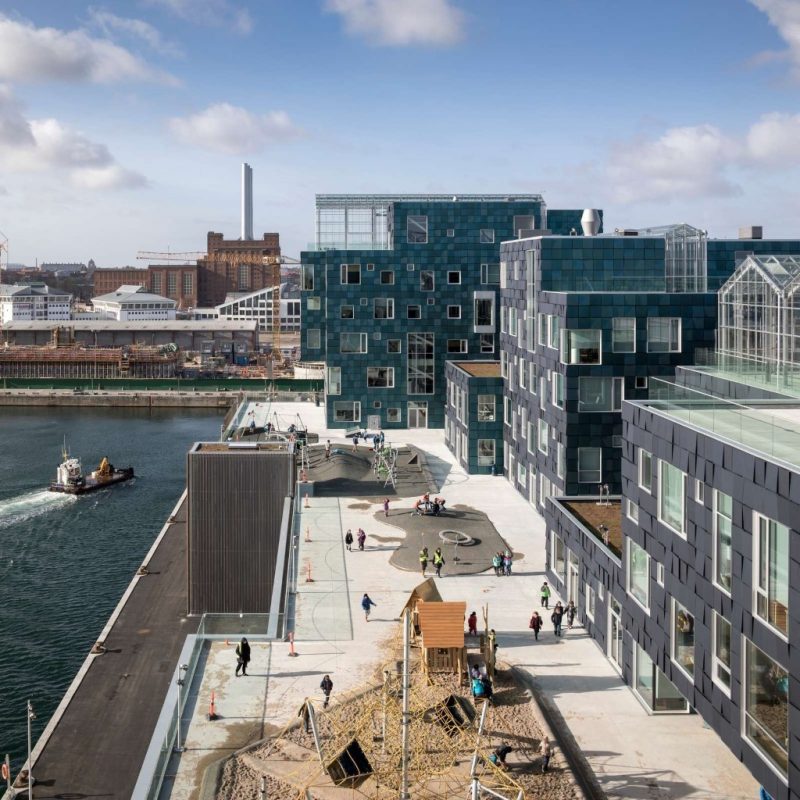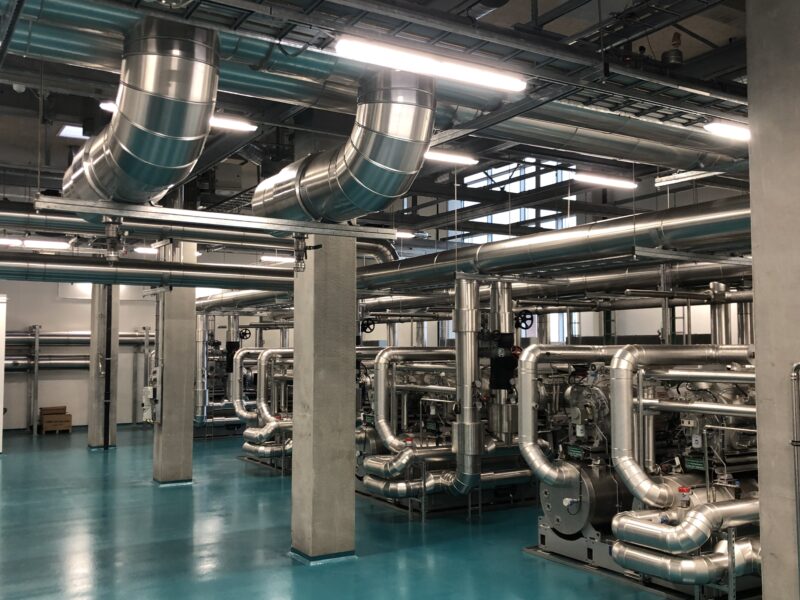News
Buildings
District cooling
District heating
+11
New white paper: Energy renovation of buildings


When the 1973 oil crisis struck, Denmark was one of the OECD countries most dependent on oil for its energy supply. With more than 90% of its national energy supplies based on imported oil, the surging prices hit a key nerve in society and marked a turning point in Denmark’s energy policies. Virtually overnight, the crisis spurred a push to diversify the national energy mix and use energy more efficiently across sectors, especially in industry and buildings.
As buildings account for almost 40% of global energy consumption, they represent a pressing, but also promising area of action in the green transition. With about 85% of the predicted European building stock for 2050 already in existence today, it is imperative that we realise the potential for energy efficiency in our current buildings.
In sharing lessons learned from decades of scaling up energy efficiency, State of Green published the white paper ‘Energy renovation of buildings: realising the untapped potential of the build environment”.
The white paper provides tangible pathways to realise the untapped energy efficiency potential in the built environment. From governance tools and meaningful partnerships to implementation of technical installations and successful repurposing, it encompasses a broad range of perspectives and concrete cases on how to promote, enable and support energy renovation efforts. Sharing experiences and information is vital to further accelerate energy renovations globally. There is undeniably a long way to go. In Europe alone, 3/4 of the current building stock in energy inefficient. We hope this publication can inspire energy efficient solutions in the green transition of the global building stock to the benefit of both the planet and the people who inhabit it.

World class solutions for energy efficient buildings
Targeting the energy consumption of buildings is a key priority for any country or community striving to reduce CO2 emissions. Promoting energy efficient buildings has long been a cornerstone of the Danish green ambition, and the innovative solutions developed by both the public and private sector have made Denmark a global leader in the field. Denmark has one of the most comprehensive regulatory frameworks for ensuring energy efficiency in buildings. Among its key components are a strict building code, energy labelling, targeted information campaigns and, crucially, involvement of relevant industries. With initiatives like public-private partnerships, Denmark presents a unique way to harness the strength of both public and private resources to support energy efficient buildings. Danish companies provide many world class solutions and technologies for insulation, windows, data control systems and architecture that make sustainable energy renovation possible.
Sustainable Energy Renovation
Renovating and retrofitting existing buildings are indispensable tools in the green transition of the built environment, as well as impactful paths to increased sustainability both environmentally, economically, and socially. Renovating a building can not only lower CO2 emissions, but it can also lower the cost for heat and electricity as well as increase the value and lifespan of the building. The business case for energy renovation is only made stronger when considering the benefits an improved indoor climate and functionality can have for residents. In the bigger picture, pursuing energy renovation can play a critical role in pushing our common energy systems towards a low-carbon future by reducing energy demand.
To reap the benefits of energy renovation across the triple bottom line, it is important to think of them collectively and holistically. When assessing the feasibility of renovation projects or developing measures to encourage them, both environmental, economic, and social considerations should drive the process.
You should consider reading
solutions
Combined heat and power production
+6
CopenHill: The story of the iconic waste-to-energy plant
20 November 2024solutions
Energy efficiency in buildings
+2















